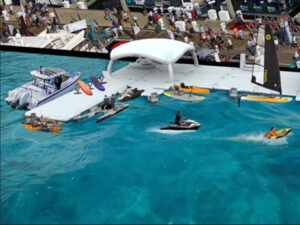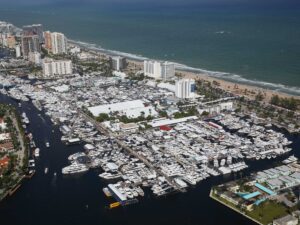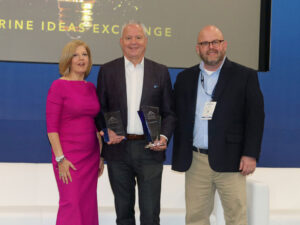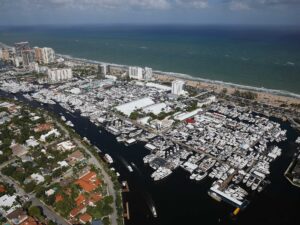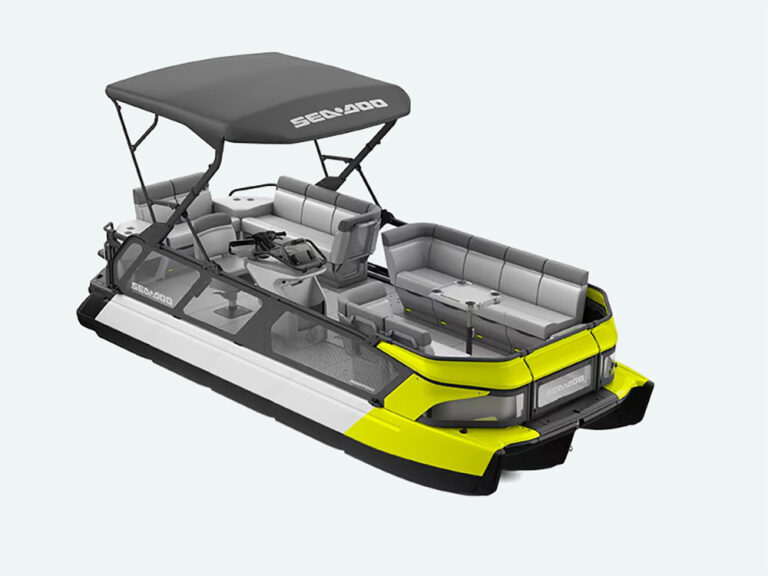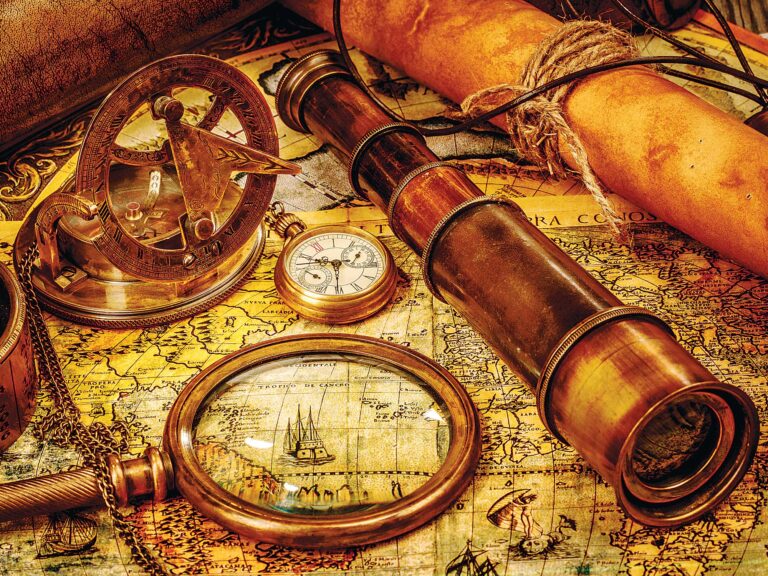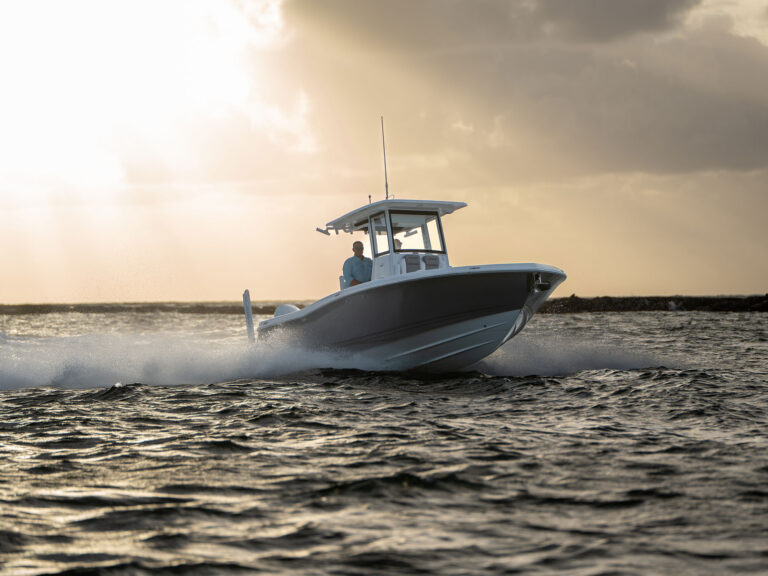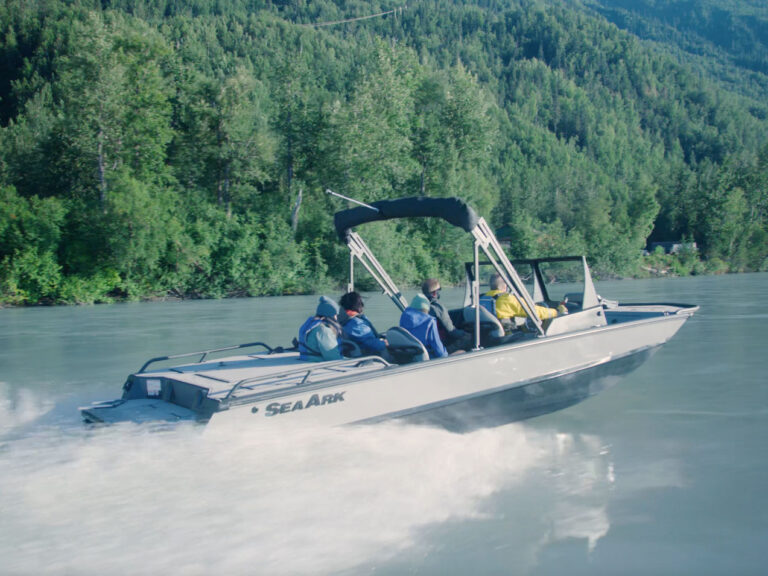
When it comes to water, the state of Florida is many things: swampy marsh with suspicious-looking gators, crystal-clear springs occupied by curious manatees, wide-open lakes with boundless potential, the busy Intracoastal Waterway and much more. The idea behind the North Florida Loop was to see as much of that diversity as possible, all while aboard two wakeboarding boats—a Malibu 23 LSV belonging to pro rider Brian Grubb, and a MasterCraft -X-Star belonging to the legendary Parks Bonifay. Our five-day itinerary called for us to run north up Florida’s St. Johns River, wrap through downtown Jacksonville, and hook south down through the saltwater ICW to Cape Canaveral. Basically, a 400-mile journey with no real need to set foot on dry land. In other words, a boater’s dream.

The early-summer air was perfectly still as we slow-motored along the cypress-covered shorelines of the St. Johns. Pro wakeboarder Massi Piffaretti was casting frog lures from the back of the X-Star, rider-turned-videographer Erik Ruck was prepping lunch for the crew on board the Malibu, I was bird-watching with my binocs, and photographer Bryan “the Golden Bear” Soderlind was reciting interesting historical tidbits he’d picked up online while researching the dignified old river. Even though we’d only just rounded the corner from the boat ramp from which we’d just launched, we were already fully immersed in the vibe of our journey. Time was no longer a concern, so everything began to move at a more leisurely pace than real life, and the boundless nature of being on the water made every friendly boater who waved as they passed by us our neighbors. We were river people now.
A short distance from where we’d started, the no-wake zones loosened up, and we were free to run. Being a bunch of wake-riding pros who’d spent the past two decades jumping, carving, surfing and skating boat wakes together, we got right into what we love most about being on the water. Appropriately enough, Bonifay hopped in first and inspired all of us with his creativity and fun-loving ways. He even got the two boats running close together to create a spine with the wakes, which motivated the rest of us to get in on the action. We took turns riding, and with each new rider, the excitement ticked up a notch. Snaking (or “gatoring”) our way along the winding river, we knew we were in for something special during the next handful of days.
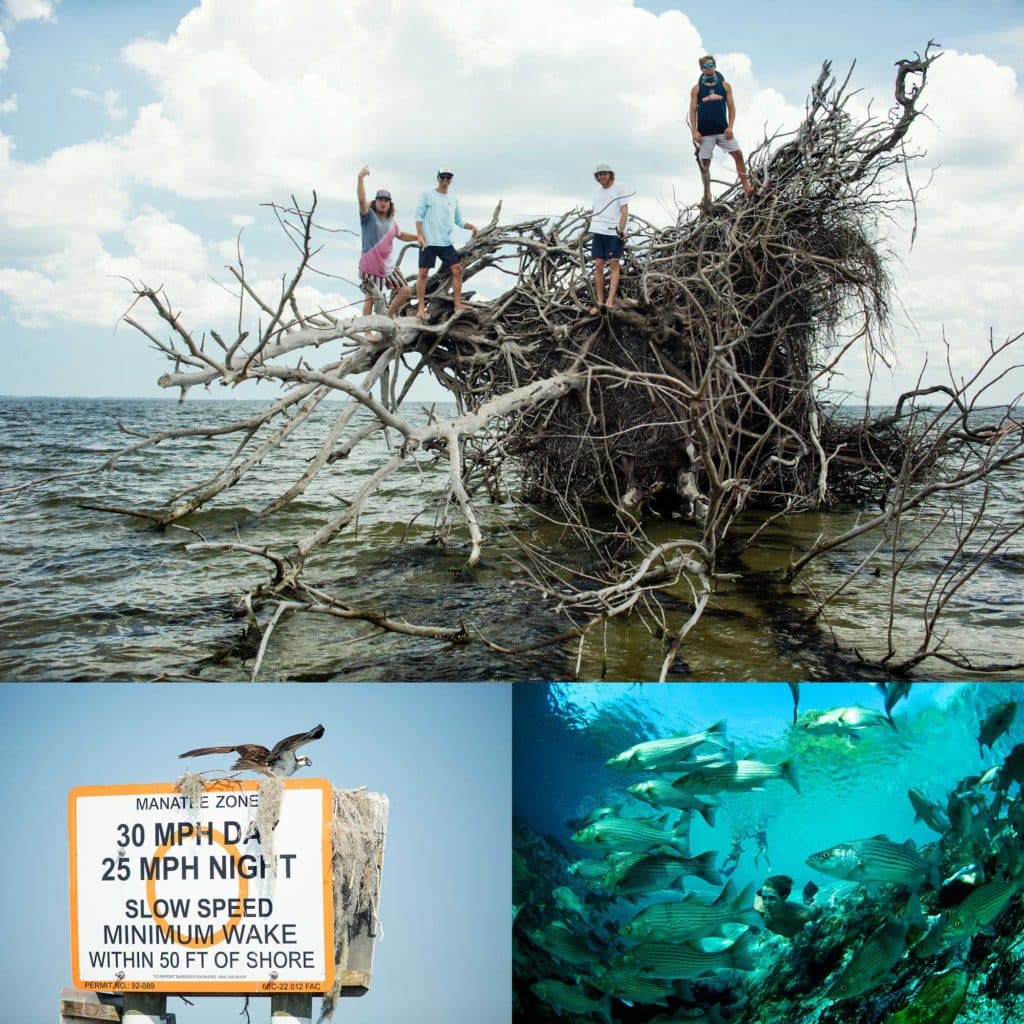
As the intimacy of the narrow river opened up to a huge, wide lake that we could barely see across, we could suddenly hear the sirens in the distance, luring us off course with a sweet song of crystal-clear water coolly flowing nearby. A brief reprieve from the midday Florida heat was too much to resist, so we veered west into a magic little cove called Silver Glen. Brown water full of snakes and gators quickly warped into a clear-blue potion full of manatees and silverfish. It became obvious why the conquistadors thought they’d stumbled upon the Fountain of Youth. We swam around the bowl-shaped headsprings—millions of gin-clear gallons of cold water pumping out of a crack in the earth—and then got out the toys. Grubb had brought two Lift eFoils, battery-powered, self-propelled hydrofoil boards. Using the wing to reduce drag and elevate the rider off the water, they can silently carve through over 20 miles of water before needing a recharge. We all took turns riding the eFoil magic carpets, flying patterns around each other as we got better, and continued to dive around in the springs until it was finally time to go. We’d located a riverside lodge just a little bit farther north, but there was just enough glowing yellow daylight left for Piffaretti to take one more wakeboard session.

With all of our batteries fully charged the next morning, we were primed and ready to resume our journey north. The previously wild and pristine river was now becoming more populated, the shoreline morphing into the classic small-town feeling of north Florida. Places with names like Palatka, Deep Creek and Astor featured riverfront houses on every point of the socioeconomic spectrum, seafood restaurants offered to deep-fry everything that could be found under their docks, and more one-of-a-kind north Florida lodging was right at the water’s edge. Our photogenic backdrops were now peppered with houseboats, wooden train trestles, Air Force bases and nuclear power plants. In a wider, branching part of the river, nearly in sight of our next major destination, we came across an 80-foot river yacht, half-sunken and jutting out of the mud near the trees. Utterly torn apart, it appeared to be a hurricane refugee that got caught out in the open and spent the next 10 years weathering down even more. We tipped our hats in sympathy to its derelict plight, and then happily waxed the portside bow so that Bonifay could board-slide the beautifully upturned gunwale, since such a spectacular opportunity rarely presents itself to those inclined to take it. Bonifay took the incline spectacularly, doing the setup such justice that even the ship’s original owner might’ve watched the session without shedding a single tear.

A few turns of the river later, the bait shacks and bullfrog croaks to which we’d grown accustomed quickly turned into high-rises and car horns—an all-out assault on the senses as we entered the bustling center of downtown Jacksonville, one of Florida’s largest and busiest cities. Grubb invited me for a doubles session, wakesurfing behind the Malibu on our (nonpowered) hydrofoil boards, right through the heart of downtown Jax. Somewhere, 40 stories over the water, in one of the many bank-stamped skyscrapers above us, an overworked number-cruncher probably glanced up from his calculator and TPS reports just in time to watch me and Grubb fly by on our foils, ropelessly hopping from one boat wake to another, dropping back to the third roller, and soul-carving past his building toward the shipping port laden with giant cargo ships and foreshadowing, without even once looking back. We’d gone from the remoteness of swampy, cypress-laden riverways to the hustle and bustle of 9-to-5 urban life, but we were still grinning from ear to ear.
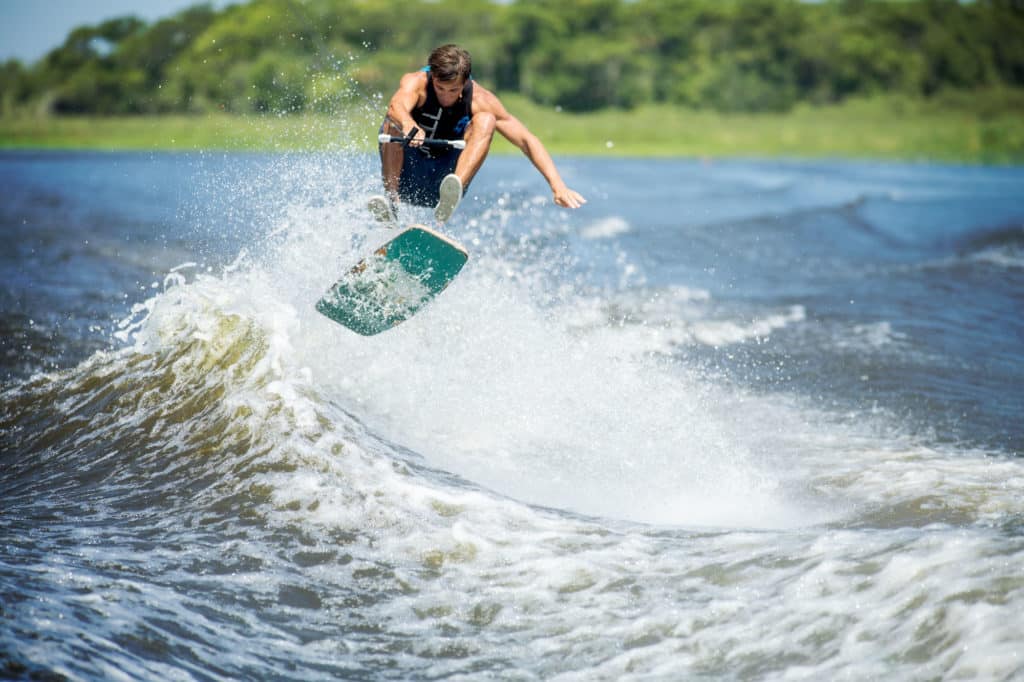
Passing through Jacksonville brought other changes to the journey: dolphins rolling through the wakes of seafaring outriggers, and a very different water texture as we skirted the sandy shores of Huguenot. We were no longer floating on the St. Johns River; we were now motoring down Florida’s Intracoastal Waterway, which meant the North Florida Loop had made its southbound turn. Although happy to return to my native salt water, I was grateful the St. Johns had so warmly taken us in.
If any other part of the trip had felt like a step back in time, it paled in comparison to what came next. After a marina breakfast, we anchored abeam one of the oldest buildings in America: the Castillo de San Marcos in St. Augustine. A Spanish fortress from the 1600s, the castle has endured attacks from pirates, sieges by British colonial forces, and a Confederate takeover, yet it stands firm in the year 2020, though no longer under control of the Spanish crown or the Confederacy. With a bit more reverence and distance than we’d given that poor river yacht back on the St. Johns, we glided around the emerald green waters of the Castillo de San Marcos on our eFoils in the beautiful morning light, carving through centuries of imperialism and strife with our silent hoverboards, while the pelicans above matched our turns with thoughtful dispositions. Bonifay was on the back of his X-Star, strumming a tune on his guitar, and Bear was tempting me to hand off the eFoil by waving a mason jar full of fresh-pressed juice. A fair deal. The peaceful day took a sharp turn when period-accurate subtenientes de fusileros approached the cannons on the terreplein and began loading them. We skedaddled southbound, taking a quick detour out the inlet to catch a quick peek of the open ocean before looping back to the calm waters of the ICW.
We happily cruised southward, enjoying glassy water and sunshine all the way until Ormond Beach, where a dark squall line stretched from east to west, threatening to derail the day. With only minutes to prepare, we hunkered down under a bridge. Through gale-force winds and a blinding deluge of rain, we endured the truth of summertime in Florida before suddenly emerging back into sunshine. The trip wouldn’t have been complete without at least one thunderstorm sending us scrambling.

Following Mother Nature’s brief delay, we made berth at Indian Mound Fish Camp a little bit south. With the slightly cooler temps, we made a little campfire out front, cooked dinner, and sparked up the best jam session of the trip, with Bonifay on his carbon-fiber guitar and vocals, Ruck on my half-size six string, and yours truly backing them up with the fiddle. We jammed in the moonlight until our campfire was low-glowing embers. Continuing south in the morning, our vista opened up to the familiar Mosquito Lagoon, an indicator that we were nearing the end of the road. I took the opportunity to enjoy a proper wakeskate session behind the boat, since I’d mostly been fooling around with hydrofoils for the past few days. Clad in my favorite Hawaiian shirt and lucky shoes, I jumped off the back of the boat right into that same joy that made me fall in love with watersports from the very start. I don’t think the smile left my face for the entire session. With the final boat ramp in sight, we diverted to a small island in the lagoon to soak up the sweet final hour of our epic adventure together. Climbing around on the half-submerged trees, taking group photos in the sand, and getting one last ride on the eFoils, we all agreed that the road trip by boat had just become a new tradition for us to indulge in for many, many years to come.

